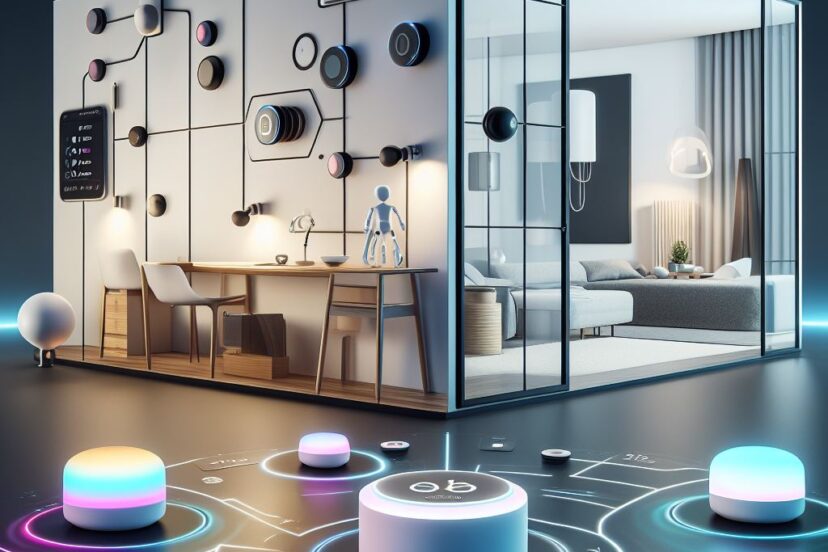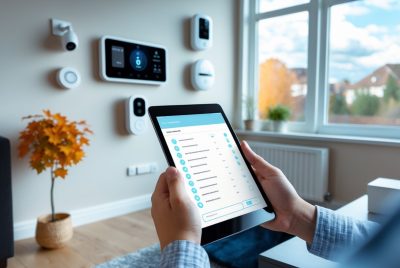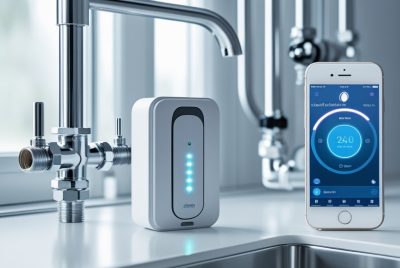Philips Hue Hub: Illuminate Your Space
*We may earn a commission for purchases made using our links. Please see our disclosure to learn more.
Philips Hue Hub: Future of Smart Lighting Control?
When considering smart home upgrades, the Philips Hue Hub has definitely set the bar high. I had the chance to integrate this powerhouse into my home setup, and it proved to be a game-changer.
My initial worry was whether this would put an extra load on my Wi-Fi, but I was pleasantly surprised to find that it does not. The Bridge uses Zigbee technology to connect to up to 50 lights and accessories, creating a stable and responsive network without Wi-Fi dependency. Expanding my smart lighting to the outdoors was a breeze, and the ability to control everything remotely adds a layer of convenience I didn’t realize I was missing. From setting the mood for a movie night with surround lighting capabilities to enhancing home security while I’m away, the Hue Bridge has added a new dimension to my home’s ambiance.
Check Price on Amazon
One minor hiccup I faced was during the initial firmware update, which took a bit of patience, but once past that, the system has been flawless. It’s reassuring to know that it’s designed to receive automatic updates, keeping the system future-proof. For those who are serious about their smart home tech, the seamless integration with Matter and voice control capability offers a harmonious experience.
Bottom Line
I’ve experienced first-hand how the Philips Hue Bridge elevates a home’s smart lighting system. It’s reliable, offers extensive control without taxing the Wi-Fi, and truly unlocks the full potential of Philips Hue.
Considering an upgrade or just starting your smart lighting journey, this is a solid investment. Take a look at the Philips Hue Hub and Bridge and see how it can brighten up your home automation game.
Philips Hue Hub: The Gateway to Smart Lighting
Having recently integrated the Hue Bridge into my home setup, I can confidently say that this little device takes smart lighting to a whole new level. It’s more than just a hub; it’s the central command center that allows seamless automation of up to 50 lights and accessories throughout your home. There’s a delightful absence of lag when commands are issued, thanks to the Zigbee technology — a feature I value highly for that instantaneous light switch feel.
The ease of out-of-home control genuinely impresses me. Being able to adjust my lights from anywhere in the world provides not only convenience but also an added sense of security. Additionally, its ability to work with voice commands and connect with other smart platforms via Matter demonstrates its forward-thinking design.
On the downside, for all its features, you need dedicated Philips equipment for full functionality. For instance, to capitalize on the surround lighting feature, a separate Hue HDMI Sync Box is required, which is not included. And while I appreciate the system’s willingness to play nicely with the broader smart home ecosystem, those looking for a simpler plug-and-play solution might find the initial setup a little daunting.
Nevertheless, once everything is up and running, the Bridge is nothing short of a reliable workhorse that never seems to strain my Wi-Fi network, even when adding multiple devices. Indeed, upgrading to the Hue Bridge has transformed my ordinary lighting into an intelligent, responsive, and customizable experience.
Simple Setup and Automatic Updates
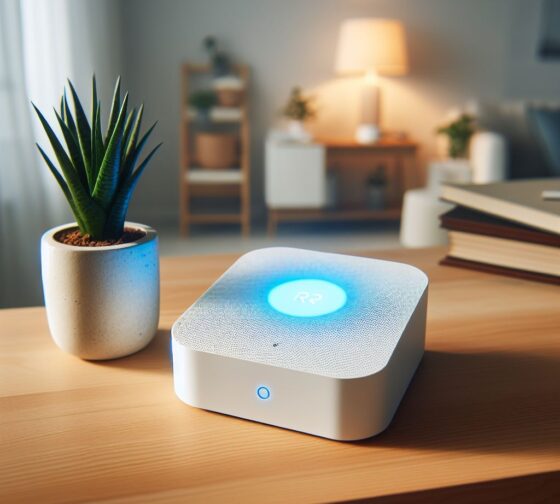
From the moment I unboxed the Hue Bridge, I was impressed by how straightforward the setup process was. It was as simple as connecting it to power and the router. Once I downloaded the Philips Hue app, it guided me through a hassle-free pairing process. The Bridge immediately took care of its firmware updates, which reassured me that I was always using the latest software without needing to check for updates manually.
What’s particularly convenient is the ability to control my lights from virtually anywhere. Whether I’ve left home in a rush or I’m away on vacation, a quick check on the Hue app allows me to adjust the lighting as if I were right there. It’s that seamless, always-connected experience that stands out to me.
The system’s reliability is another standout feature. Thanks to the advanced Zigbee technology, my smart lighting setup doesn’t hinge on the stability of my Wi-Fi connection. It’s reassuring to know that even during those odd times when the internet falters, my smart lights won’t skip a beat.
Lastly, the Bridge ensures that I’m future-proofed. The idea of not having to worry about whether my smart lighting is outdated is a weight off my shoulders. The automatic updates mean that the Bridge is constantly evolving, and I’m benefiting from the latest features and performance improvements without any effort on my end.
Smart Control From Anywhere
In my experience with the Hue Bridge, the convenience of controlling my home lighting from any location has truly stood out. Recently, while away from home, I found the remote control feature to be a lifesaver. It was as simple as pulling out my phone and using the Hue app to adjust my lights back home—a perfect way to deter any would-be intruders.
The system doesn’t rely on my home Wi-Fi to function, which means even with internet issues, I maintain control over my lighting setup. This added layer of reliability gives me peace of mind that I won’t be left in the dark—literally. The ability to fine-tune lighting for different rooms, creating distinct ambiances is a fantastic feature, although I found myself wishing for a more intuitive process when setting up complex scenes.
Lastly, the Bridge’s compatibility with the Matter smart home standard means I can integrate with other smart devices, which makes for a more seamless smart home ecosystem. While it’s reassuring to know my setup is future-proof with automatic updates, it’s worth mentioning that adding a Hue HDMI Sync Box to sync lights with entertainment requires an additional purchase.
Expandable and Adaptive Smart Home Integration
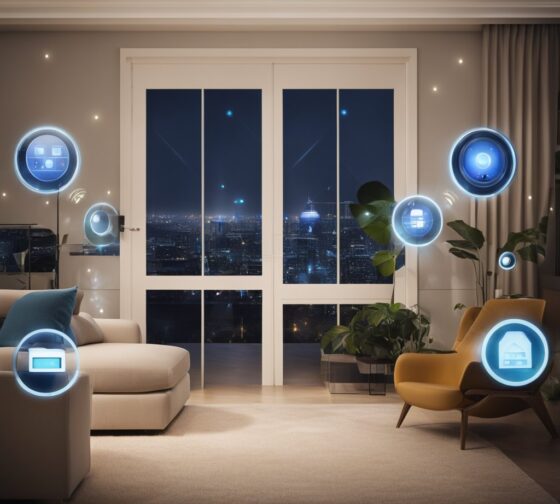
Having spent some quality time with the Philips Hue Bridge, I’ve found its capacity to grow with your smart home needs quite impressive. One thing that stands out is the Bridge’s ability to connect to a staggering 50 lights and accessories. While I didn’t hit that limit, adding new devices was a breeze, and the integration feels seamless.
The Hue Bridge enhances the smart home experience by ensuring that connectivity issues aren’t a concern—it doesn’t rely on Wi-Fi but uses Zigbee technology instead. This means a stable and secure connection for your smart lighting, without overloading your home network. When I tested it, my lights responded instantaneously, even when my Wi-Fi was temporarily down.
Additionally, I love the freedom of controlling lights from wherever I am. A quick tweak in the Hue app, and my home’s lighting adjusts precisely to my preference, whether I’m around or miles away. It’s a level of convenience that’s hard to beat.
What makes the Bridge future-proof is its compatibility with Matter. This allows for a unified smart home ecosystem, making it simple to connect with other compatible devices. The Bridge is always up-to-date with automatic updates, so your smart home remains cutting-edge.
The only caveat I’ve come across is that to get the most out of features like surround lighting for entertainment, you’ll need extra equipment, such as the Hue HDMI Sync Box, which is sold separately. Nonetheless, for those venturing into or expanding their smart home universe, the Hue Bridge is a cornerstone worth investing in.
Surround Lighting Experience
Since incorporating the Philips Hue Bridge into my home setup, the transformation in lighting ambiance has been simply remarkable. Offering more than just on and off functionality, this device opens up a palette of colors and shades that adapt to any mood or occasion I choose to create. Whether I’m winding down for the evening or hosting a get-together, the Bridge’s ability to synchronize lights across multiple rooms adds another level of polish to my home’s atmosphere.
My enjoyment isn’t limited to the walls of my home, either. What’s equally impressive is the out-of-home control, giving me the power to adjust settings even when I’m away. The sense of security this brings cannot be overstated—never again do I worry whether I left the lights on or off.
Yet it’s not without its drawbacks; the device does have to be wired to the router, which could limit placement options. Additionally, while the robust connectivity protocols like Zigbee and Wi-Fi ensure a stable connection, the setup can be a bit technical for those less experienced with smart home gadgets.
In essence, the Philips Hue Bridge is a robust cornerstone for anyone serious about their smart lighting, making the overall ambiance in my home captivatingly dynamic. With voice compatibility features, I effortlessly switch scenes with just a word—an aspect of modern convenience I’ve come to treasure.
Pros and Cons
Having spent some time with the Philips Hue Hub, I’ve gathered my thoughts on its advantages and disadvantages.
Pros
- Ease of Setup: I found the initial setup to be pretty intuitive. It’s as simple as connecting the Bridge to power and my router, then following the app’s guidance.
- Not Wi-Fi Reliant: The Bridge’s use of Zigbee technology is a game-changer. Even if my Wi-Fi is down, my Hue lights remain operational, which is reassuring.
- Remote Control: Controlling the lights while away from home is incredibly convenient. I’ve experienced the peace of mind of turning off lights I’ve left on by mistake, no matter where I am.
- Expansive Compatibility: I’ve successfully connected up to 50 lights, along with various accessories. It’s versatile and works flawlessly with outdoor systems too.
- Integration with Smart Ecosystems: The compatibility with Matter protocol and platforms like Samsung SmartThings means I can integrate with a broader smart home setup.
- Future-Ready: Automatic updates keep the device current. I’m confident that my investment won’t become outdated anytime soon.
Cons
- Separate Purchase for Full Experience: To truly harness the surround lighting feature, I had to buy a separate Hue HDMI Sync Box, which is an added expense.
- Cost: The price point may be considered high for a hub, even though the quality and functionality justify the investment.
- Mixed Reviews on Functionality: Some users have reported setup issues, such as update failures, though I didn’t face these myself. It seems to be a hit or miss.
- Setup Confusion: Instructions about connecting to the router could be clearer. I had to look up online for additional guidance, which was a minor inconvenience.
In summary, the Philips Hue Bridge serves as the centerpiece of an advanced, versatile lighting network that’s reliable and prepared for future innovations in smart home technology. Despite the higher initial cost and a couple of potential hiccups with setup, I’ve found its benefits to significantly outweigh the cons.
Customer Reviews
Having spent ample time with the Philips Hue Bridge, I’ve observed a remarkable consensus in the feedback from other customers. The overall sentiment leans positive, with many highlighting the transformational experience it brings to home lighting control. It’s often praised for its stable connection and how it didn’t burden their Wi-Fi networks, something I also noticed during my use.
Despite the general satisfaction, some users did encounter hiccups. A few mentioned an “update failed” glitch, which I also came across but resolved with an alternative app before reverting to the standard Hue software. The price point was occasionally a talking point, with a mix of opinions on its value. Yet, for the functionality this device provides, in my view, and seemingly for many others, the investment seems justified.
The ease of installation is a highlight in customer commentaries, confirmed by my experience—it was quite straightforward. However, suggestions for clearer instructions concerning the modem connection could make the setup even more user-friendly. Personal integration with voice assistants and home automation tops the list of its merits, reinforcing its reputation as a leading choice in smart lighting hubs.
Conclusion
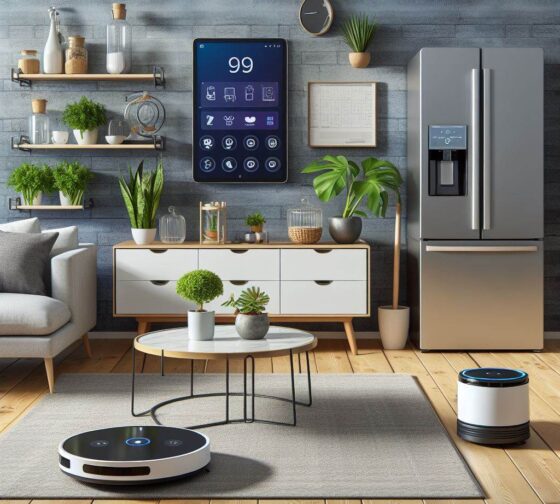
After spending quality time with the Philips Hue Bridge, I find that it stands as an integral part of the smart home ecosystem. Its ability to bring together multiple rooms under a single, easy-to-use lighting scheme is noteworthy. The setup was straightforward, although, I must admit, figuring out the right port for connection took a quick online search. In use, the Hub offered a reliable and secure connection, ensuring my home’s Wi-Fi wasn’t burdened with additional devices. Though the price might seem a tad high, the quality of life improvements in light control make it a worthy investment.
That said, not everything was smooth sailing; I encountered a firmware update issue that required a workaround via the Hue Essentials app. This hiccup, however, was a one-time event, and the overall performance has been smooth since. I appreciate the Hub’s compatibility with voice commands and notice its robust reach, even in sizable living spaces. It’s apparent why users tend to either love it for its simplicity and functionality or encounter one-off issues. My experience has been positive, with the Philips Hue Bridge reliably doing its job, transforming my daily light interactions into a seamless, automated experience.
Frequently Asked Questions
Having recently set up my own Philips Hue Bridge, I figured it might be helpful to answer some common queries about the device. Let’s face it, smart home technology can sometimes be confusing, and getting straight to the point can make things a lot more digestible.
1. How do I set up my Philips Hue Hub?
Setting up the Hue Bridge was simpler than I expected. First, you physically connect it to both power and your home router. Next up, download the Philips Hue app on your smartphone and follow the on-app instructions. It’s a smooth process, and before you know it, your lights are ready to respond to your every command.
2. Can the Philips Hue Hub operate over WiFi?
Contrary to assumption, the Hue Bridge doesn’t connect to lights via WiFi but uses Zigbee, a different kind of wireless technology. This ensures your lighting system still functions even if your WiFi goes down, though the Bridge itself does require an Ethernet connection to your router.
3. What are the differences between Philips Hue Hub versions?
While I only have experience with the latest version, the main differences in Bridge versions typically revolve around improved connectivity and a broader range of features. It’s best to check the company’s official documentation for detailed comparison.
Is a Hue Bridge required to use Philips Hue lights?
You can use some Hue lights’ basic features without a Bridge. However, to truly unlock their full potential—think remote access, compatibility with smart home ecosystems, or light syncing with music and movies—you need the Hue Bridge.
What features are available with the Philips Hue Hub Starter Kit?
The Starter Kit introduces you to the world of smart lighting. I was able to control lights remotely, set schedules, and group lights into rooms or zones. It also opens up the possibility for future firmware updates, ensuring the system stays current.
What should I do if my Philips Hue Hub isn’t connecting?
When my Bridge had trouble connecting, I made sure the router was online and the cables were properly connected. If that doesn’t solve the issue, rebooting the Bridge and checking for any app updates are good next steps. Sometimes persistent issues may require a reset through the app.
In my experience with the Hue Bridge, I found its setup straightforward and its operation reliable. While the lack of WiFi functionality may surprise some, the trade-off is a lighting system that doesn’t lay extra strain on your home network. It’s reassuring to be able to control my home’s ambiance with a few taps on my phone, and the peace of mind that comes with knowing it’ll still work when the WiFi’s out is a great bonus. That being said, if you’re searching for a minimalist smart lighting setup and don’t need remote access or advanced features, you might get by without the Bridge. But for those looking to dive into a comprehensive smart home experience, this little device is essential.

